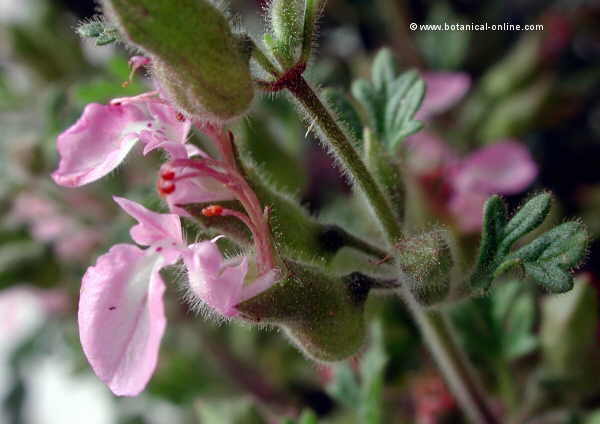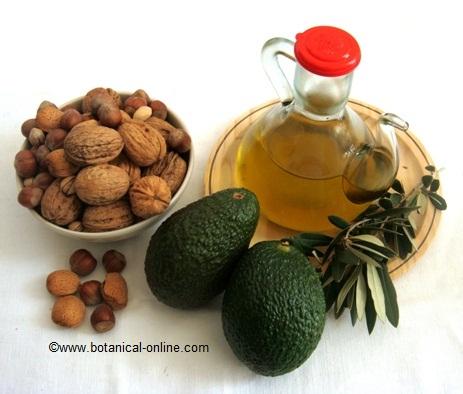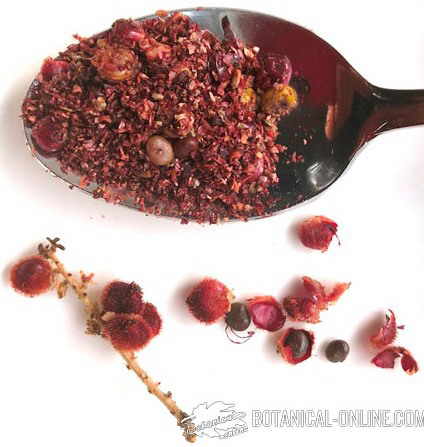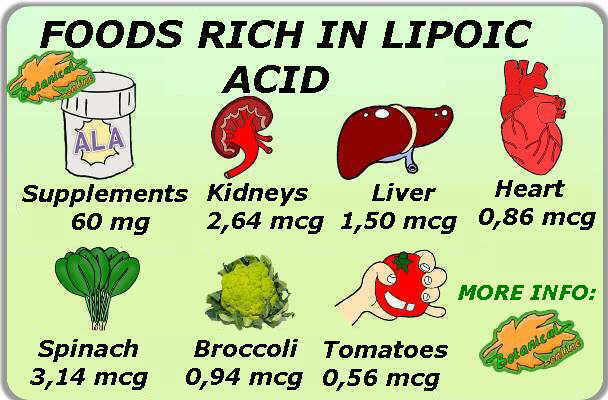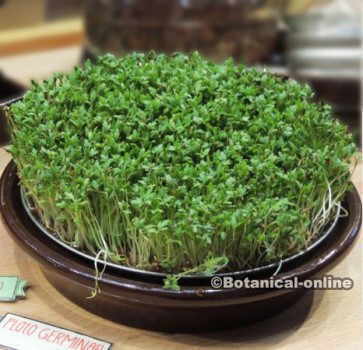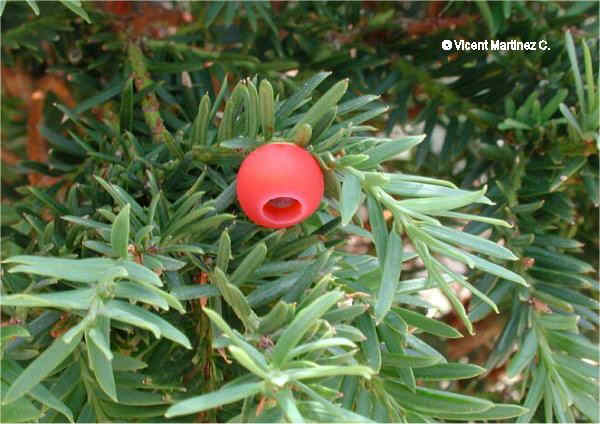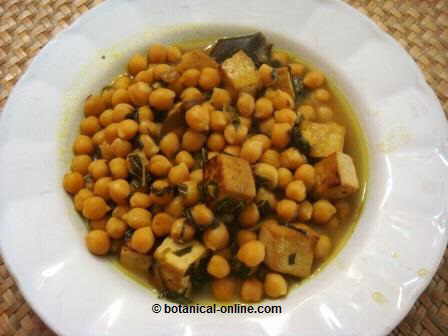Contents
Phytonutrients list
CHEMICAL AGENTS OF THE PLANTS
What are the main chemicals in plants?
Plants have a myriad of chemicals. Among these, those that deserve more attention from a medical point of view, are phytochemicals, or chemicals with proven healing properties.
The following table shows a list of the most important, as also a set of foods that contain them and which usual intake is very interesting for good health.
MAIN PHYTOCHEMICALS
Among the main food that should appear frequently in our diet are the following:
- Foods with sulfur compounds: These compounds are very interesting for the good state of the heart and the prevention of cancer. Within this group we would have foods like:
- Garlic and onion: They are rich foods in sulfur components, mainly allicin, and the flavonoid quercetin, which help prevent cancer and maintain good cardiovascular health.
- Food high in flavonoids and carotenoids: They are compounds that give the characteristic color to fruits or vegetables. It is believed that these components are the main phytochemicals that can prevent many diseases. Within this group, we must consider a number of subgroups:
Foods rich in beneficial chemicals
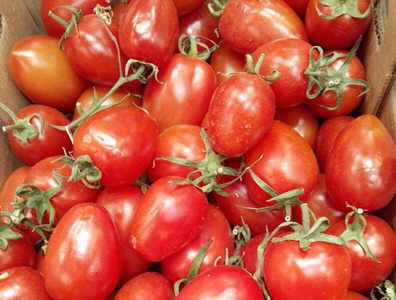 – Foods rich in lycopene: it has antioxidant and anticancer properties. Foods that contain this phytochemical are:
– Foods rich in lycopene: it has antioxidant and anticancer properties. Foods that contain this phytochemical are:
– Tomatoes: With a high amount of lycopene and glutathione, two components with proven antioxidant and anticancer properties.
– Peppers, watermelons and papayas: They have a lot of beta carotene and lycopene, two proven antioxidants.
– Foods rich in betacarotene: they inhibit the formation of cancerous tumors, especially lung cancer and breast cancer, help maintain good skin and vision health, and protect against infection. Foods that contain these principles would be:
– Carrots, pumpkins or spinach: Its ingestion provides a protection against cancer. Carrots contribute especially to a good eye health, or to a good skin condition. Pumpkins help against the enlargement of the prostate and spinach prevents anemia and helps protect the heart.
– Foods high in catechins: Besides his anti-carcinogenic properties, they have other numerous virtues, among them the prevention of the arthritic diseases or the protection of the liver. The main source of phytochemical is provided through infusions of green tea.
– Foods high in lutein: they help to preserve vision by preventing vision loss. Among the main foods with lutein we have spinach, carrots, pumpkin or lettuce.
– Foods rich in hesperidin and routine: these are phytochemicals from citrus (lemons, oranges, grapefruit, etc.). They have many properties: they protect the liver, lower blood pressure, strengthen the hair, etc.
– Foods rich in resveratrol and anthocyanins: they are the phytochemicals from wine and grapes. With antioxidant properties, they primarily protect eyesight, promote a healthy heart and protect the arteries.
– Foods rich in phytosterols, they protect the body against high cholesterol, blocking its absorption in the intestine. The three major phytosterols are beta-sitosterol, campesterol and stigmasterol. We can them in:
– In soybeans. (Very rich in beta-sitosterol)
– Some vegetal oils, like soybean oil or maize oil , (Beta-sitosterol)
– In fruits such as cherimoya (Rich in campesterol and stigmasterol)
– In oleaginous fruits like avocado. (Beta-sitosterol)
– In dried fruits as hazelnuts, cashews, pistachios and pine nuts.
– In vegetables such as cucumbers.
– Foods with phytoestrogens: As elements similar to estrogen or female hormones, help the hormonal balance of women taking part in improving the symptoms of premenstrual syndrome, prevention of breast cancer, colon or ovarian cancer and lowering cholesterol.
The main phytoestrogens are lignans, isoflavones and coumestans. Among the main phytoestrogen-rich foods we have:
– Foods rich in lignans: Foods rich in lignans are the seeds of flax, lentils and cereals.
– Foods rich in isoflavones: The main food is soy and its derivatives (tofu, soymilk or soy flour). It contains two highly recognized isoflavones, genistein and daidzein, which properties to prevent breast or prostate cancer or limit its growth. Very important to prevent osteoporosis. Peas are another rich source of isoflavones.
– Foods rich in coumestans: Among the main ones we can mention alfalfa sprouts, cabbage or clover leaves.
– Foods rich in tannins: Tannins are astringent compounds of bitter taste that appear in plants such as grapes, (also the wine), apples or strawberries and in medicinal plants, like green tea. They are very important in healing wounds, treating diarrhea or in preventing the onset of cholesterol. They are very important antioxidants.
– Rich foods in indoles : Between these most important they are the sulforafane and the indol-3-carbinol. The last one seems to take part in the regulation of estrogens, preventing the development of the breast cancer. Indoles, generally, neutralize the corporal toxins that can be crucial for the development of cancerous tumors.
Between the richest foods in these components we have the components of the family of the cabbage family (cabbages and similar plants)
– Foods rich in linolenic acid: Its role as assistant to the immune system in the prevention of several diseases is well recognized. With anticancer and anti-inflammatory properties, among others, this acid, usually called Omega-3, is mainly in foods like oily fish, hazelnuts, walnuts or almonds.
– Caffeic acid-rich foods: Their role as destroyers of carcinogenic compounds such as nitrosamines, is well recognized. Foods rich in this component are: pears, apples, grapefruit, lemons, oranges, peppers, cabbage, wheat or corn.
– Ferulic acid-rich foods: As the former, this is a super antioxidant, able to inhibit the growth of cancerous tumors. Ferulic acid stimulates the defense system, protects the liver and prevents attacks of herpes. Among foods that contain this principle we would mention: pineapples, apples, potatoes, wheat, peanuts, corn, oranges, spinach or radishes.
– Chlorogenic acid-rich foods: with antitumor, anti-ulceric, inmunoestimulant and hepatoprotective properties, chlorogenic acid can be obtained with the ingestion of tomatoes, potatoes, peas, wheat or sunflower seeds.
– Foods rich in P-coumaric acid: bananas, apples, spinach, lemons, garlic, grapefruits, cauliflower, rice, cabbage or soybean are very rich in this phytochemical.
![]() More information on “chemical agents of the plants”.
More information on “chemical agents of the plants”.

